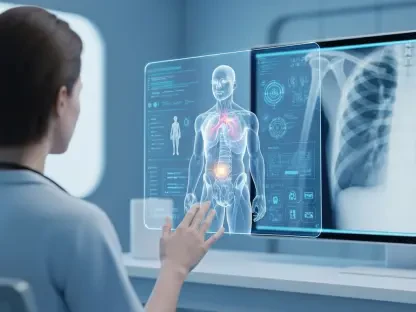The world of healthcare diagnostics is witnessing an exciting transformation through the integration of facial thermal imaging with advanced artificial intelligence (AI). In a realm where precision is paramount, this technology promises a breakthrough by offering a non-invasive, real-time assessment method. Specifically, its application in predicting coronary artery disease (CAD) could reshape diagnostic approaches, eliminating the discomfort and limitations associated with traditional methods such as invasive procedures and time-consuming tests.
Unveiling the Technology’s Core
Facial thermal imaging AI employs infrared technology to capture heat patterns emitted from a person’s face, interpreting them through sophisticated AI algorithms. This enables detailed analysis of physiological changes indicative of potential health issues. In the context of CAD, it serves as a strategic ally against traditional diagnostics, which can be burdensome and carry inherent inaccuracies. Through thermal imagery, AI can identify patterns linked to abnormal blood circulation and inflammation, conditions often intertwined with heart disease.
The underpinning methodology relies on detecting minute temperature differences and variations across facial regions. With AI’s analytical prowess, these variations are translated into diagnostic insights, potentially clarifying ambiguous clinical signs that current diagnostics struggle to interpret precisely. This technology crafts an elegant solution—merging medical needs with technological innovation—to refine accuracy and accelerate health assessments.
Key Features Enhancing Diagnostic Capabilities
Central to the efficacy of this technology is AI-driven thermal analysis, emphasizing the detection of subtle anomalies through facial temperature data, offering insights previously inaccessible to clinicians. Its significant role lies in its accuracy, which outpaces conventional diagnostic probabilities tied to risk factors and symptoms. The technology exploits the ability to observe thermal signatures that suggest physiological irregularities pertinent to CAD, thus empowering clinicians to make informed decisions swiftly.
Infrared thermal imaging technology encapsulates the process of capturing and analyzing facial temperature maps. This powerful capability is deployed efficiently in capturing and differentiating these temperature variations, which may signal underlying cardiovascular conditions. In practical applications, its non-contact nature ensures a seamless, patient-friendly experience, rendering it a pivotal tool for healthcare environments aiming to adopt advanced diagnostic modalities.
Advancements and Applications Gaining Ground
The latest developments in facial thermal imaging AI have prompted a shift in both technological and industry paradigms. Emerging innovations continue to refine the software algorithms underpinning AI’s analytical capabilities. These innovations enhance the precision with which this technology identifies CAD indicators by increasing the clarity and relevance of thermal data interpretation.
In the healthcare and diagnostics sectors, facial thermal imaging AI has found applications beyond CAD detection. Its potential extends to other diagnostic frameworks, bolstering its utility in preventive health screenings and contributing to proactive healthcare strategies. The transformative ability to provide instant health insights positions it as a leading choice for healthcare providers looking to leverage cutting-edge technology.
Navigating Challenges and Potential Pathways
Despite its promise, the technology faces hurdles, including technical intricacies and regulatory scrutiny. Developing robust, universally applicable models that perform consistently under diverse conditions is paramount. Regulatory acceptance remains a barrier that requires effort from stakeholders advocating for the technology’s safety and efficacy.
Efforts to address these issues are concentrated on refining AI algorithms and expanding clinical trials to improve reliability. These endeavors aim to overcome market hesitancy and ensure this technology’s broad-based adoption. Overcoming these challenges will pave the way for deeper integration into diagnostic portfolios worldwide.
Envisioning a Future with Facial Thermal Imaging AI
The future of facial thermal imaging AI is promising, with expectations for further advancements enhancing its diagnostic capabilities. Anticipated breakthroughs may include improved AI models that can analyze thermal data with even greater precision and application across a more comprehensive set of medical conditions.
As the technology evolves, its long-term impact on healthcare promises to be transformative, holding the potential to reshape diagnostic approaches, moving towards more nuanced and patient-friendly mechanisms. These advancements may contribute significantly to early disease detection and streamline clinical workflows. Ensuring accessibility and equity in deploying these technologies will be crucial to maximizing their benefits.
In conclusion, the review of facial thermal imaging AI reveals its immense potential to revolutionize healthcare diagnostics, particularly CAD. The innovative synergy between thermal imaging and AI enables non-invasive diagnostics with enhanced accuracy, offering a viable alternative to traditional methods. As challenges are addressed and further research progresses, this technology could redefine the landscape of medical diagnostics, providing seamless and real-time insights integral to modern medicine.









